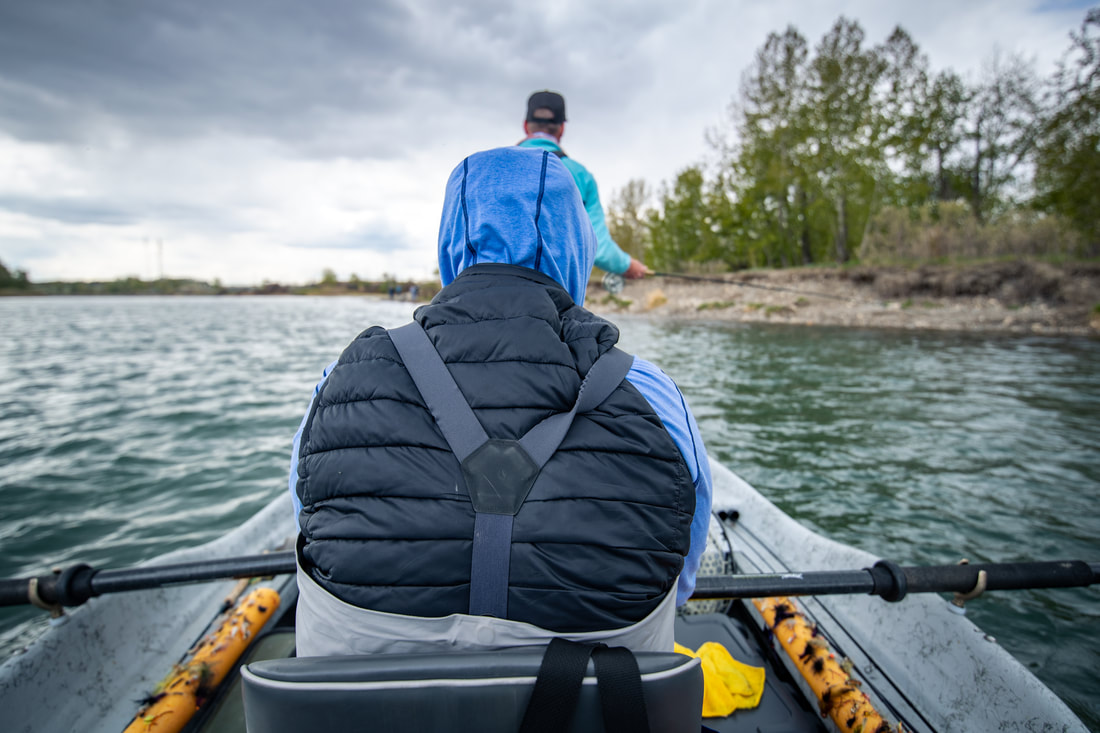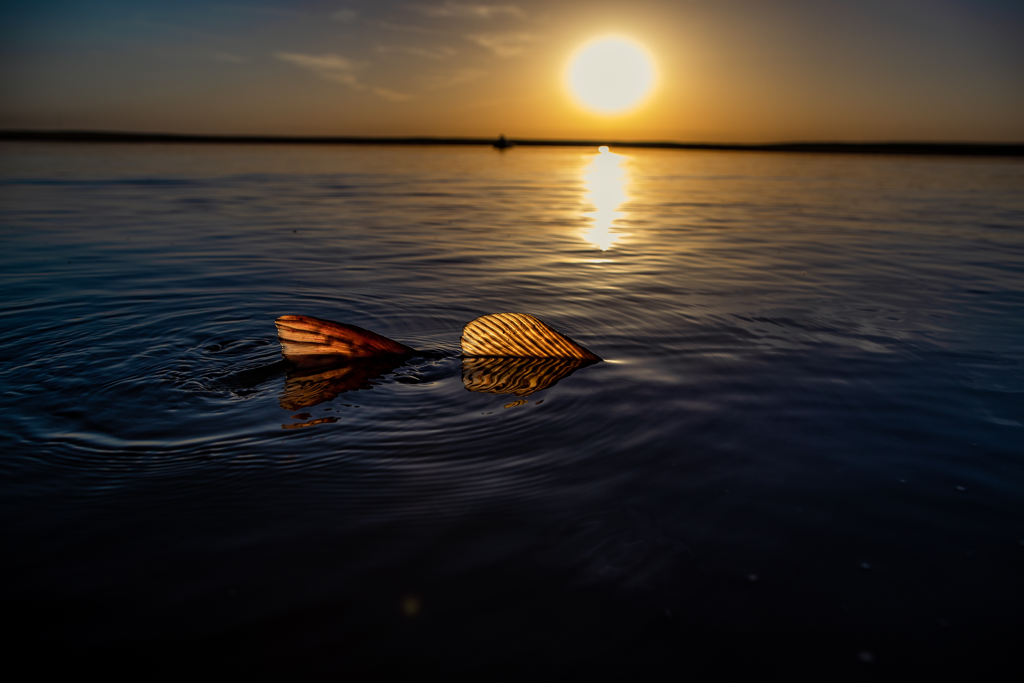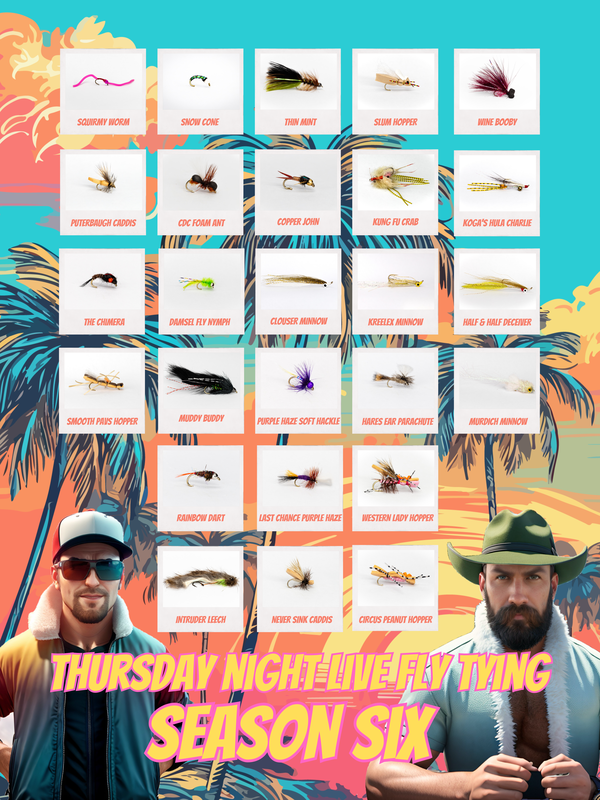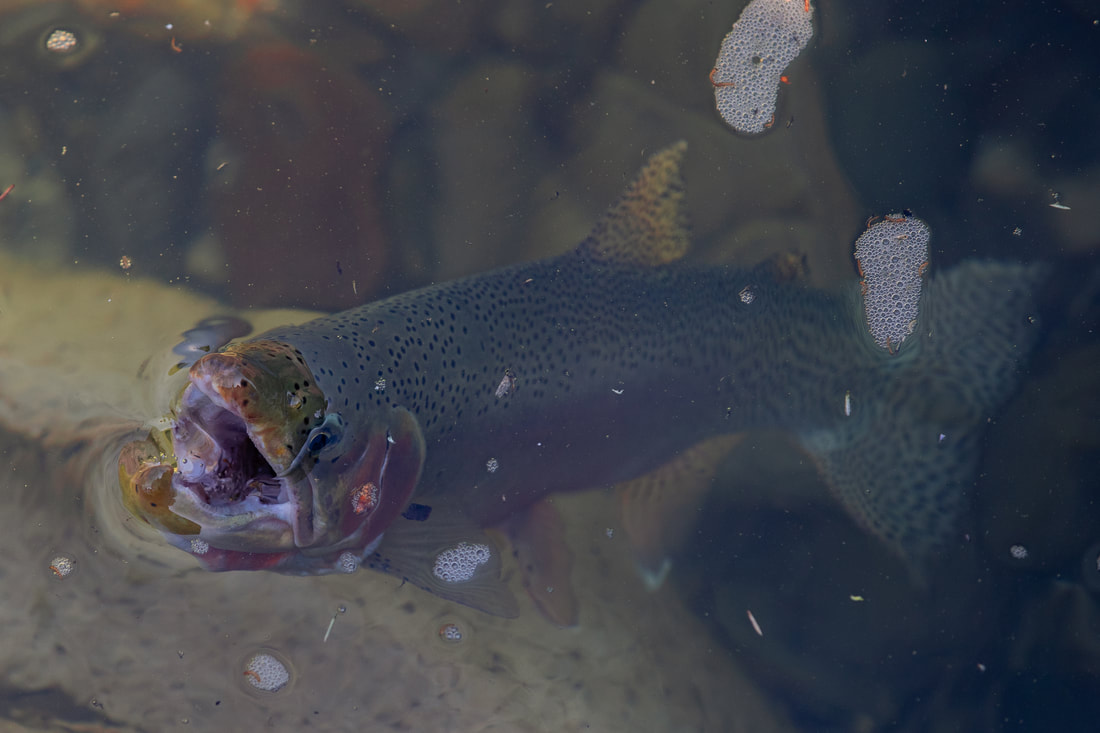|
For many anglers, the thrill of fly fishing from a drift boat is unparalleled. The gentle sway of the river, the artful cast of a line, and the anticipation of a catch all culminate in an experience that's both serene and exhilarating. But mastering the art of rowing a drift boat is essential to ensure a seamless and enjoyable fishing expedition.
Beginning with Trailering and Launching Preparing for a day on the river begins with securing the drift boat onto a trailer. Properly hitching and ensuring the boat is securely attached is crucial for a safe journey. Always check local regulations for trailer speed limits and road rules. Arriving at the river, patience is key when launching the boat. Take your time and be mindful of others at the launch site. A smooth launch sets the tone for the day ahead. Etiquette on the Water Respect for other anglers, boaters, and the environment is fundamental. Avoid crowding other fishermen and maintain a safe distance on the water. Practicing good river etiquette contributes to a harmonious fishing experience for everyone. Anchoring and Rowing Tips ( YOUTUBE VIDEO ABOVE) A well-placed anchor is a fly fisherman's ally, allowing for precise positioning for optimal casting. Master the art of anchoring by understanding river currents and selecting suitable anchor points. When it comes to rowing, finesse and technique reign supreme. Start by getting accustomed to the oars' feel and response. Use shorter, controlled strokes to navigate through varying currents, and always keep an eye on the upcoming river features. Prioritizing River Safety Safety is non-negotiable when on the water. Equip yourself with a personal flotation device (PFD) and ensure all passengers have theirs on as well. Understanding river currents, potential hazards, and weather conditions is imperative for a safe outing. Navigating River HazardsFrom submerged rocks to swift currents, rivers present an array of hazards. Learn to read the water, identifying safe passages and potential obstacles. Stay vigilant, especially in changing conditions, to avoid mishaps. Safety Gear in the Boat Besides PFDs, carry essential safety gear such as a first aid kit, a throw bag, a whistle, and emergency supplies. These items can be invaluable in unforeseen circumstances and are indispensable for any responsible angler. Rowing for Fishing: A Skill to MasterThe art of rowing for fishing goes beyond maneuvering the boat; it's about enhancing the fishing experience. A skilled rower can position the boat optimally for the angler, accounting for wind, currents, and the best casting angles. Rowing a drift boat for fly fishing is a multifaceted skill that combines technical prowess with a deep appreciation for the natural environment. Mastering the nuances of rowing and understanding river dynamics ensure not only a successful fishing trip but also a safe and enjoyable one for all. Capturing the Perfect Fly Fishing Moment: Photography Tips and Tricks
Hey there, fellow fly fishing enthusiasts! You know that magical feeling when you're out on the water, casting your line, and connecting with nature? Well, what if I told you that you could capture those moments forever through the lens of your camera? Yes, that's right! Let's talk about the art of fly fishing photography and how you can immortalize those incredible moments on film. 1.Gear Matters, But It's Not Everything You don't need the most expensive camera gear to take stunning fly fishing photos. Sure, a high-end DSLR or mirrorless camera can do wonders, but even your smartphone can capture some breathtaking shots. What truly matters is how you use the gear you have. 2.Lighting – Nature's Best Friend One of the secrets to amazing photography is good lighting. Early morning and late afternoon usually offer the best natural light for capturing the beauty of fly fishing. The soft, warm glow enhances the scene and adds a magical touch to your photos. 3. Capture the Action and Emotion Don't just focus on the fish! While that's often the goal, the emotions, concentration, and movements of the angler are equally captivating. Try to capture the anticipation in their eyes, the grace of their cast, and the thrill of the catch. 4.Experiment with Angles and Perspectives Get creative! Don't just shoot from eye level. Try different angles – get low to the water, climb up high, or shoot from unique vantage points. Changing perspectives can add depth and uniqueness to your photos. 5.Focus on Details Sometimes, the most beautiful moments lie in the smallest details. Capture the intricate patterns of the flies, the ripples on the water, or the worn-out fishing gear. These details often tell compelling stories. 6.Patience is Key Just like in fly fishing, patience is crucial in photography. Wait for the right moment, observe the surroundings, and be ready to click that shutter when the magic happens. Sometimes, the best shots come to those who wait. 7. Post-Processing Magic Editing can enhance your photos significantly. Whether it's adjusting exposure, contrast, or adding a slight vignette, simple edits can make your images pop. But remember, don't overdo it – subtlety is often the key to great editing. 8.Share Your Story Every photo has a story behind it. Share your experiences, the challenges you faced, the thrill of the catch, or the serenity of the surroundings. Let your audience connect with your journey through your images. So, there you have it – some tips and tricks to elevate your fly fishing photography game. Remember, the most important thing is to enjoy the moments you're capturing. So, grab your gear, head to your favorite fishing spot, and let your camera capture the magic of fly fishing! Happy clicking! Embarking on the captivating journey of fly tying is a thrilling endeavour for any angler. Crafting your own flies adds a personalized touch to your fishing experience, and it all begins with assembling the right tools. Let's dive into the 10 indispensable items you need to start tying flies and explore their significance in creating the perfect fly.
1. **Vise: The Heart of Fly Tying** At the core of your fly tying setup lies the vise. This ingenious tool holds the hook firmly, allowing you to work your magic with precision. Invest in a quality vise that offers stability and adjustability to accommodate various hook sizes. 2. **Bobbin: Thread Control** The bobbin is your fly tying pen, controlling the thread with finesse. Opt for a bobbin with adjustable tension to maintain consistent wraps, ensuring the durability of your flies. 3. **Scissors: Cutting Edge Precision** A reliable pair of scissors is indispensable. Precision cuts are crucial for creating neat, effective flies. Look for scissors with a fine point to navigate intricate patterns with ease. 4. **Thread: The Invisible Bond** The thread is the invisible glue that holds your fly together. Choose threads in various colors and thicknesses, ensuring you have the right one for each pattern. A strong, durable thread is essential for securing materials in place. 5. **Hooks: The Foundation of Success** Selecting the right hook sets the foundation for a successful fly. Different styles and sizes cater to various fishing scenarios. Understanding the purpose of each hook type is key to tailoring your flies to specific situations. 6. **Dubbing: Adding Flare to Flies** Dubbing is the material that adds life and texture to your flies. With a vast array of colors and textures available, experimenting with dubbing allows you to create realistic imitations of aquatic insects. 7. **Hackle: Bringing Flies to Life** Hackle, often sourced from feathers, imparts lifelike movement to your flies. Whether dry flies or nymphs, the right hackle can mimic the motion of insects on the water's surface, making your flies irresistible to fish. 8. **Beads and Eyes: Adding Weight and Realism** Beads and eyes serve both functional and aesthetic purposes. They add weight to your fly, influencing its sink rate, while also enhancing its visual appeal. Experimenting with different sizes and colors can yield enticing results. 9. **Wire: Reinforcing Durability** Adding wire to your flies reinforces durability and adds weight. Wire can be used to create ribbing for nymphs or to secure materials in place. It's a versatile component that enhances the longevity of your creations. 10. **Whip Finish Tool: The Final Touch** The whip finish tool is the finishing touch to your masterpiece. It secures the thread, ensuring your fly remains intact during those vigorous battles with feisty fish. Mastering the whip finish is an art in itself, adding a professional touch to your creations. As this list can seem daunting, epsecially when you move into the material side of things, that is why we have designed fly tying kits to make this process super easy for you ! Can can choose sampler packs of individual patterns, or you can join us for a whole season of fly tying, to learn how to tie many patterns, without dishing out the big bucks on bulk material that you may never use! Click the button below to get started! Fly fishing is an artful pursuit that offers anglers a unique connection with nature and a thrilling challenge. While various techniques are employed to catch different species of fish, dry fly fishing stands out as an elegant and exciting approach. In this blog post, we'll delve into the world of dry fly fishing, providing you with valuable tips and techniques to help you master this captivating aspect of the sport.
Understanding Dry Fly Fishing Dry fly fishing is a method where an artificial fly is presented on the water's surface to mimic a real insect. Unlike nymph or streamer fishing, dry fly fishing involves enticing fish that are actively feeding on the surface. To be successful, it's essential to understand the insects fish are targeting and to present your dry fly as a convincing meal. Tips for Selecting the Right Dry Fly
Dry fly fishing is a captivating and rewarding form of fly fishing, allowing anglers to witness fish rising to the surface and taking their fly. By understanding the insects, selecting the right dry fly, and mastering the presentation techniques, you can increase your success and enjoyment on the water. Remember that dry fly fishing is not just about catching fish but also about appreciating the beauty of nature and the thrill of the chase. So, grab your gear, practice your casting, and head to the water to master the art of dry fly fishing. With patience and persistence, you'll be well on your way to becoming a skilled surface angler. |




 RSS Feed
RSS Feed